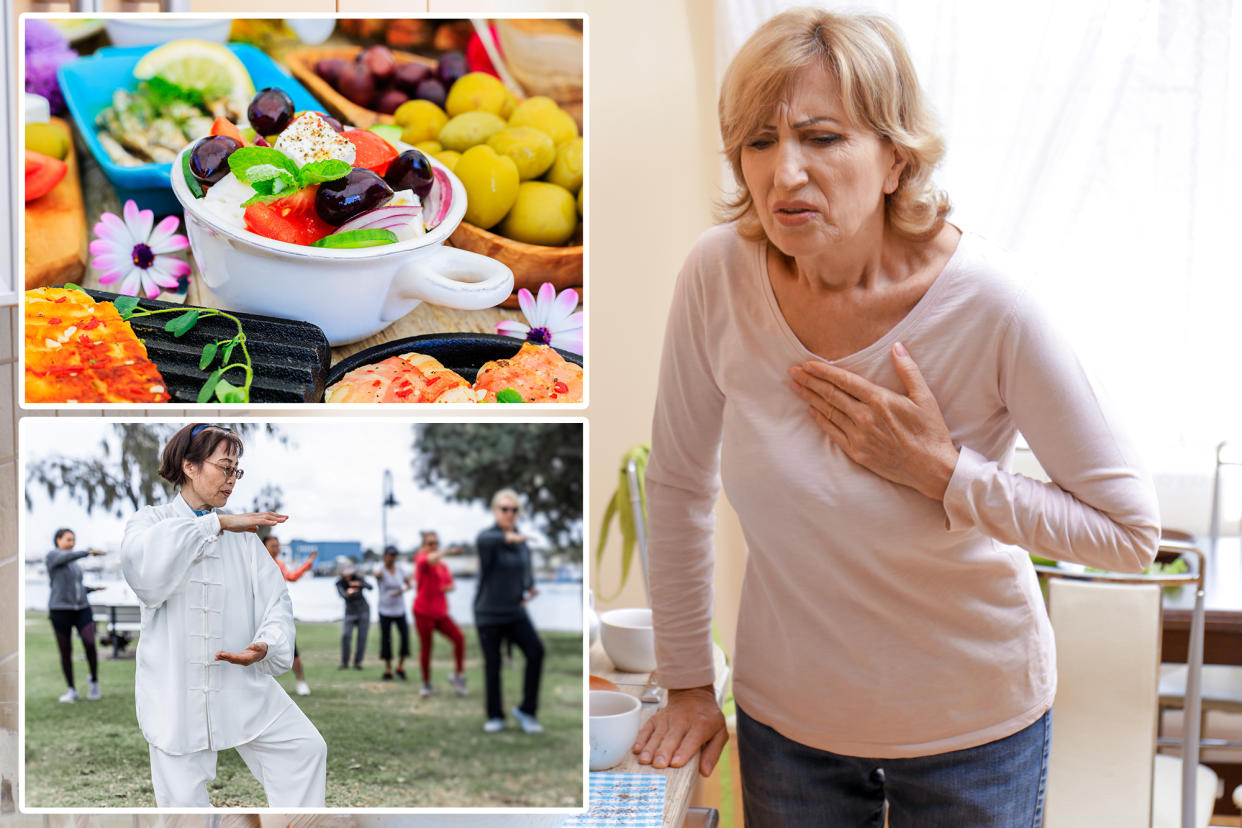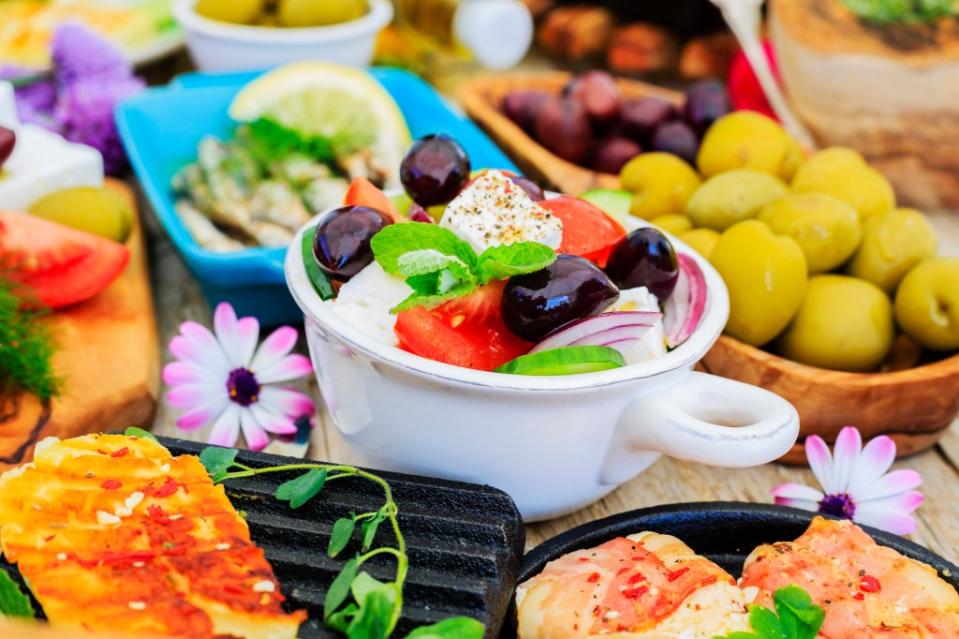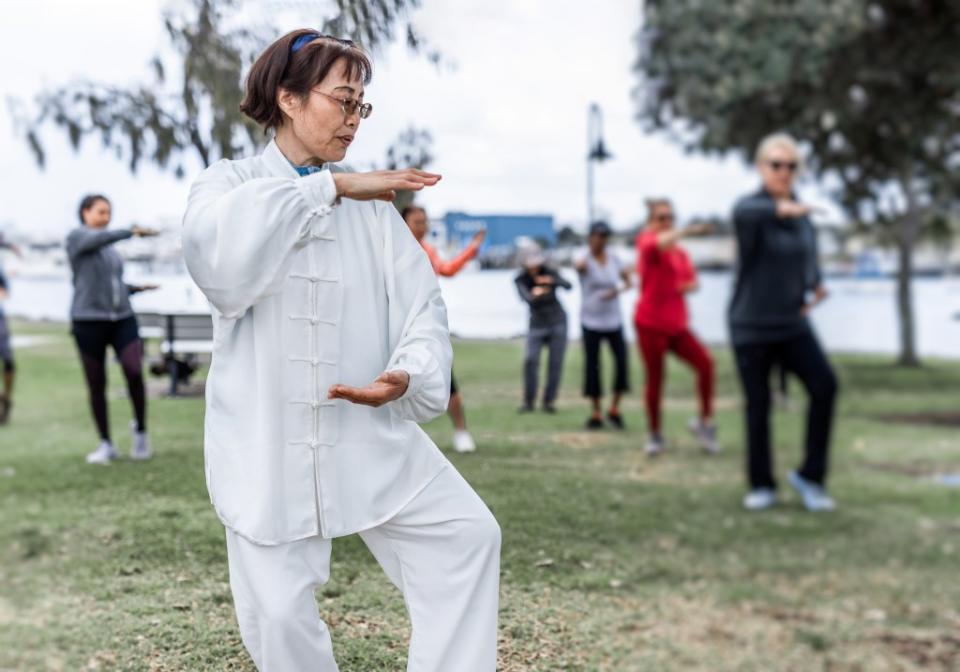5 ways women can lower their stroke risk — including one to do before going outside

A Florida doctor who specializes in stroke rehabilitation is sharing five ways women can lower their risk of having a stroke — the brain attack is the fifth-leading cause of death for American women.
A stroke occurs when blood flow to the brain is blocked or when a blood vessel bursts and leaks blood into the brain. Experts say that one in five American women 55 to 75 years old will suffer a stroke.
Dr. Parag Shah, who practices at Brooks Rehabilitation in Jacksonville, Florida, recommends women embrace the Mediterranean diet, avoid air pollution, practice tai chi or yoga, know the less-common stroke signs, and understand the “hidden” biological factors that can make them more susceptible to strokes.

Embrace the Mediterranean diet
The Mediterranean diet is a plant-based eating plan that emphasizes fruits, vegetables, whole grains and healthy fats while limiting red meat and sugar.
A 2018 UK study found that women who committed to the Mediterranean diet lowered their stroke risk by 22% compared to women who rarely followed the diet — if at all. Men who ate Mediterranean-style only saw a 6% reduced risk, the researchers said.
Shah also recommends consuming potassium-rich foods to keep blood pressure in check. Dried fruits, beans, potatoes, spinach, broccoli, avocados, and bananas are among the foods high in potassium.
“A sufficient intake of potassium is associated with reducing risk of stroke,” Shah told The Post. “Hence including foods with potassium in your meals can positively affect your heart health, muscle performance and overall disease prevention efforts.”

Avoid air pollution
Exposure to various types of air pollution — even after just five days — has been linked to an increased risk of stroke.
Shah advises checking the air quality in your area. On high-pollution days, limit your time outside, use a HEPA air purifier in your home, and turn on exhaust fans in your kitchens and bathrooms.
“Wearing a mask outdoors can help filter out particles in the air to some extent,” Shah said. “This all depends on the mask type worn, mask fit and the size and type of pollutants in the air.”

Practice tai chi and yoga
“Participating in physical activities like yoga, tai chi and strength training, while also giving importance to mindfulness techniques such as meditation and deep breathing exercises, could provide additional advantages in lowering the risk of strokes,” Shah reported.
He suggests doing this 30 to 60 minutes a day, three to five times a week.
Know the less-common stroke signs
Sudden confusion, difficulty understanding, slurred speech, double vision, numbness or weakness, especially on one side of the body, are often overlooked signs of strokes, Shah shared.
If you think someone is having a stroke, immediately call 911.
“Remember to stay calm and comfort your loved one letting them know that help is on the way. Take note of when the symptoms began or when the patient was last seen normal,” Shah said.
“This information is critical for the treatment plan at the hospital,” he continued. “Check their breathing and pulse and refrain from offering any food or drink to prevent choking.”

Understand what can make women more susceptible to strokes
Shah notes that using oral contraceptives, being pregnant, giving birth, and undergoing hormone therapy or hormonal changes such as menopause can raise the likelihood of having a stroke.
“Scheduling regular health check-ups and staying knowledgeable about stroke symptoms and prevention methods remain essential for maintaining good health,” Shah encouraged.


